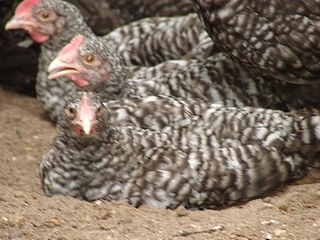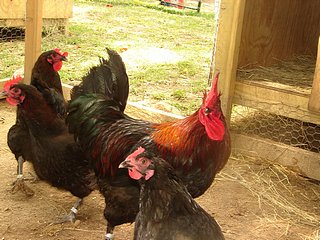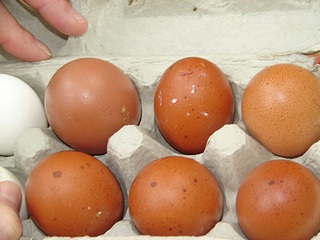Maran Chickens: The Up and Coming Chicken Breed
Maran Chickens, The Facts:
Class: Unclassified
Size: Standard Male: 8.5 Ibs. / Standard Female: 7 Ibs. Bantam Male: 38 oz. / Bantam Female: 32 oz.
Comb, Wattles & Earlobes: Rough textured, single comb with five or more points held upright. Fairly long wattles and earlobes. All are bright red.
Color: Beak is horn. Eyes are dark red; shanks and toes are slate, unless otherwise noted.
Birchen: Standard Birchen plumage.
Black: Black beak, shanks, and toes. Standard black plumage.
Black-Tailed Buff: All plumage except tail is uniform buff, ranging from a light shade to a deep reddish shade. Tail is primarily black, but feathers may have brown edging.

Brown Red: Standard brown-red plumage.
Columbian: Standard Columbian plumage.
Golden Cuckoo: Feathers on head, hackle, and back have golden bars set against white. Breast, body, legs, tail, wing feathers have a pattern of dark slate bars set against white, always ending in a dark bar.
Silver Cuckoo: Feathers have a pattern dark slate bars which are almost black in females and sometimes lighter in males. These are set against white, always ending in a dark bar.
Wheaten: Standard wheaten plumage.
White: White shanks and toes. Standard white plumage.
Place of Origin: France
Conservation Status: N/A
Special Qualities: Good layer of large brown eggs. Good dual purpose bird.
In the late 1800's in France farmers began introducing Langshans into the bloodlines of game type birds. Maran Chickens are the result of these breeding's. Because of their roots in game birds, they have what is known as "hard" feathering, which means their feathers are narrow and short with a heavy, tough shaft and do not fluff. They also have a solid body, a strong looking beak, and a relatively short tail.

The French variety of Marans has feathered legs, which tie to their Asiatic roots from the Langshan. The English variety, which is more popular in the United States is clean legged.
These birds are best known for their large brown, almost chocolate colored eggs. With the special eggs and their relative rarity in the U.S., these hatching eggs can bring a good price at times.
These birds are very active, but can adapt adequately to confinement.
Marans are not yet recognized by the APA or the ABA, but there has been a growing interest in the breed in the United States. The price of the eggs have helped and as more people continue to raise Maran Chickens, they may soon be recognized by the APA.


Custom Search



New! Comments
Have your say about what you just read! Leave me a comment in the box below.